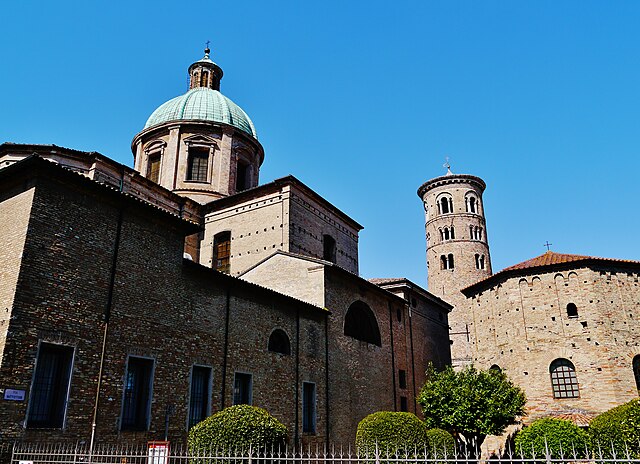The Basilica of San Vitale is a late antique church in Ravenna, Italy. The sixth-century church is an important surviving example of early Byzantine art and architecture, and its mosaics in particular are some of the most-studied works in Byzantine art. It is one of eight structures in Ravenna inscribed on the UNESCO World Heritage List. Its foundational inscription describes the church as a basilica, though its centrally-planned design is not typical of the basilica form. Within the Roman Catholic Church it holds the honorific title of basilica for its historic and ecclesial importance.
The Church of San Vitale
Basilica of San Vitale
Exterior view of St. Vitale
The interior of the dome, with Baroque frescoes from the late 18th century.
Ravenna is the capital city of the Province of Ravenna, in the Emilia-Romagna region of Northern Italy. It was the capital city of the Western Roman Empire during the 5th century until its collapse in 476, after which it served as the capital of the Ostrogothic Kingdom and then the Byzantine Exarchate of Ravenna.
Mosaic of the Emperor Justinian I from the Basilica of San Vitale, Ravenna
Image: Ravenna Cattedrale Metropolitana della Risurrezione di Nostro Signore Gesù Cristo Esterno Lato Nord 1
Image: Ravenna Basilica di San Vitale Esterno 07
Image: Mauselo Galla Placidia, esterno








